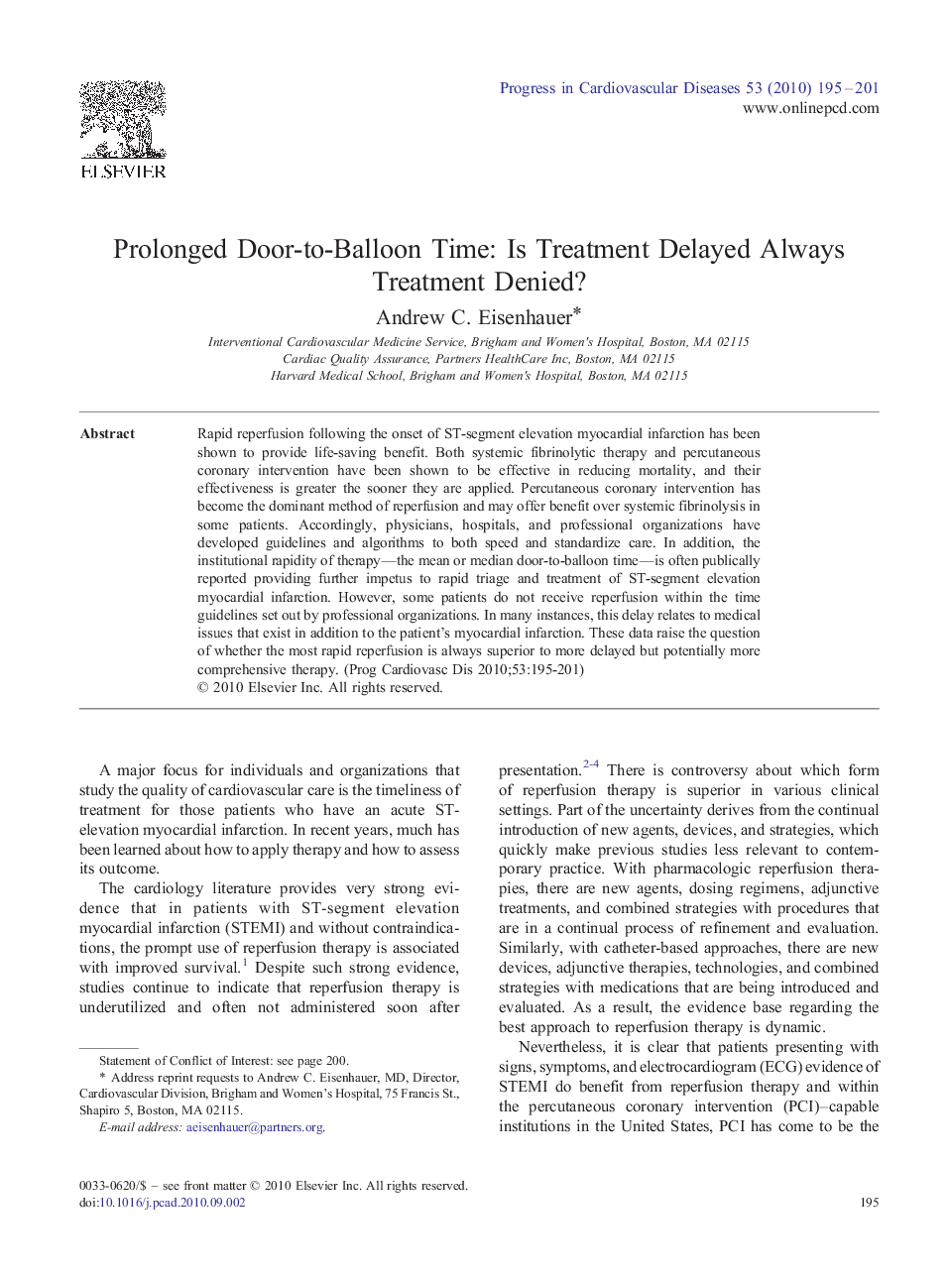| کد مقاله | کد نشریه | سال انتشار | مقاله انگلیسی | نسخه تمام متن |
|---|---|---|---|---|
| 3006845 | 1181011 | 2010 | 7 صفحه PDF | دانلود رایگان |

Rapid reperfusion following the onset of ST-segment elevation myocardial infarction has been shown to provide life-saving benefit. Both systemic fibrinolytic therapy and percutaneous coronary intervention have been shown to be effective in reducing mortality, and their effectiveness is greater the sooner they are applied. Percutaneous coronary intervention has become the dominant method of reperfusion and may offer benefit over systemic fibrinolysis in some patients. Accordingly, physicians, hospitals, and professional organizations have developed guidelines and algorithms to both speed and standardize care. In addition, the institutional rapidity of therapy—the mean or median door-to-balloon time—is often publically reported providing further impetus to rapid triage and treatment of ST-segment elevation myocardial infarction. However, some patients do not receive reperfusion within the time guidelines set out by professional organizations. In many instances, this delay relates to medical issues that exist in addition to the patient's myocardial infarction. These data raise the question of whether the most rapid reperfusion is always superior to more delayed but potentially more comprehensive therapy.
Journal: Progress in Cardiovascular Diseases - Volume 53, Issue 3, November–December 2010, Pages 195–201